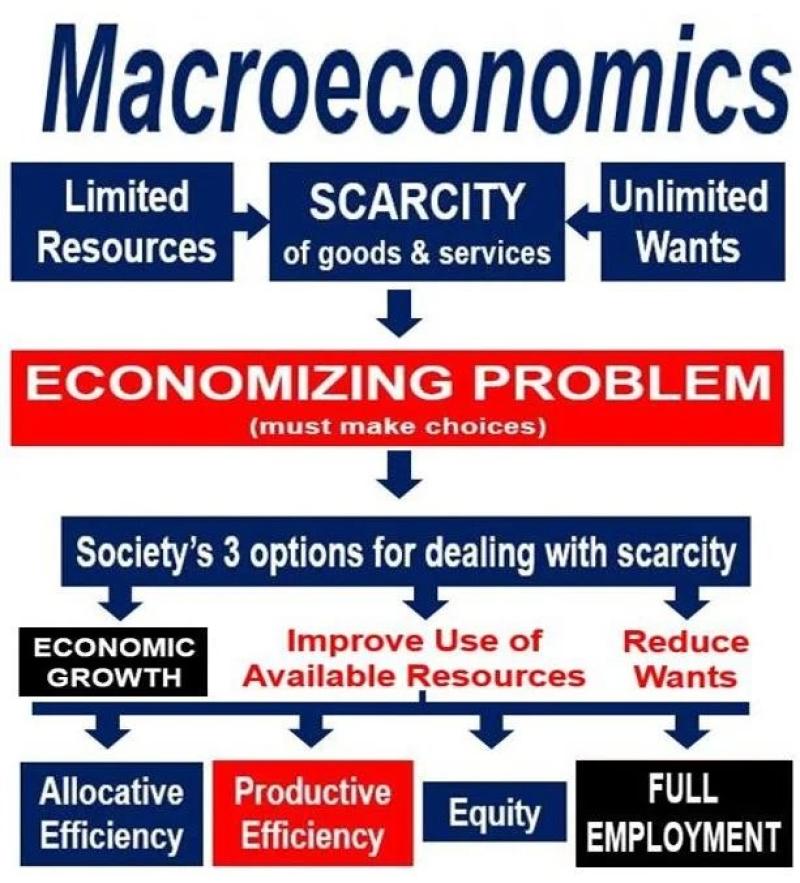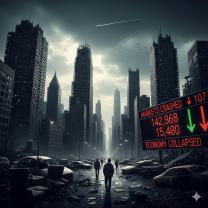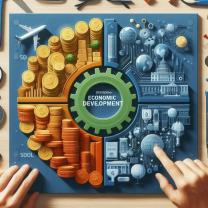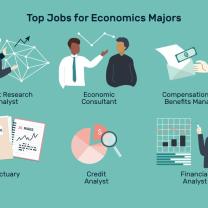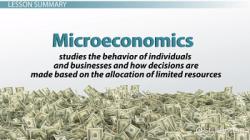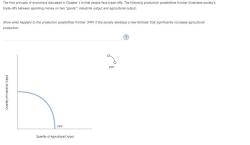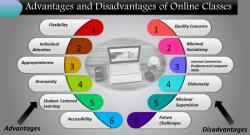What is macroeconomics in economics?
Macroeconomics is a branch of economics that studies the overall performance, structure, behavior, and decision-making of an entire economy. Rather than focusing on individual markets or specific economic agents, as in microeconomics, macroeconomics looks at the economy as a whole, analyzing aggregate phenomena and outcomes.
Key areas of focus in macroeconomics include:
National Income and Output: Macroeconomics examines the total production of goods and services in an economy, known as national income or output. Key indicators include Gross Domestic Product (GDP), Gross National Product (GNP), and the various measures of income and output.
Unemployment: Macroeconomists study the level of unemployment in an economy, seeking to understand the causes and consequences of unemployment and the factors influencing labor force participation.
Inflation: The study of inflation, or the general increase in prices over time, is a central concern in macroeconomics. Economists analyze inflation rates, causes of inflation, and its impact on purchasing power.
Economic Growth: Macroeconomics explores the determinants of long-term economic growth, including factors like technological progress, capital accumulation, and productivity improvements.
Monetary Policy: The role of money and the actions of central banks, such as the Federal Reserve in the United States, are central to macroeconomic analysis. Macroeconomists study how changes in the money supply, interest rates, and other monetary policy tools influence the overall economy.
Fiscal Policy: The study of government spending, taxation, and budgetary policies falls within the realm of macroeconomics. This includes analyzing the impact of fiscal policies on economic stability and growth.
International Trade and Finance: Macroeconomics examines the interactions between different economies, including trade balances, exchange rates, and global economic integration.
Business Cycles: Macroeconomists study the patterns of economic fluctuations known as business cycles. This includes understanding periods of economic expansion, recession, peak, and trough.
Macroeconomic Models: Economists develop models to represent and analyze the behavior of the economy. These models often include components such as aggregate demand and supply, monetary factors, and government interventions.
Policy Implications: Macroeconomics plays a crucial role in shaping economic policies. Policymakers use macroeconomic analysis to design and implement measures aimed at achieving economic stability, reducing unemployment, and fostering sustainable economic growth.
Macroeconomics is essential for understanding and addressing broad economic issues at the national and international levels. It provides a framework for policymakers, businesses, and individuals to make informed decisions in response to economic challenges and opportunities.
How does macroeconomics differ from other branches of economics?
While all branches of economics aim to understand how individuals and societies make choices and allocate resources, macroeconomics stands out with its distinct focus and approach. Here's how it differs from other key branches:
Focus:
- Macroeconomics: Focuses on the aggregate economy as a whole, analyzing factors like national income, inflation, unemployment, economic growth, and international trade.
- Microeconomics: Focuses on individual decision-making, behavior of firms and consumers within specific markets, and how supply and demand interact to determine prices and resource allocation.
Scale:
- Macroeconomics: Takes a top-down approach, using broad concepts and data to analyze nationwide or even global trends.
- Microeconomics: Takes a bottom-up approach, studying individual units like firms and consumers and aggregating their behavior to understand market outcomes.
Methodology:
- Macroeconomics: Often relies on aggregate data and econometric models to identify correlations and predict economic trends.
- Microeconomics: Uses mathematical models, game theory, and statistical analysis to understand individual behavior and market dynamics.
Policy Implications:
- Macroeconomics: Informs government policies like fiscal and monetary policies aimed at stabilizing the economy, managing inflation, and promoting growth.
- Microeconomics: Informs policies related to specific markets, competition, regulations, and consumer protection.
Additionally:
- Macroeconomics is more interconnected with other disciplines like sociology, political science, and history due to its focus on broader societal and global factors influencing economic trends.
- Microeconomics often provides building blocks for macro models by understanding individual behavior and market mechanisms that feed into aggregate outcomes.
In essence, macroeconomics is like looking at the forest, while microeconomics focuses on individual trees. Both perspectives are crucial for understanding the full picture of how economies function and are affected by various factors.
I hope this helps clarify the distinctions between macroeconomics and other branches of economics! Feel free to ask if you have any further questions or want to explore specific differences in more detail.
